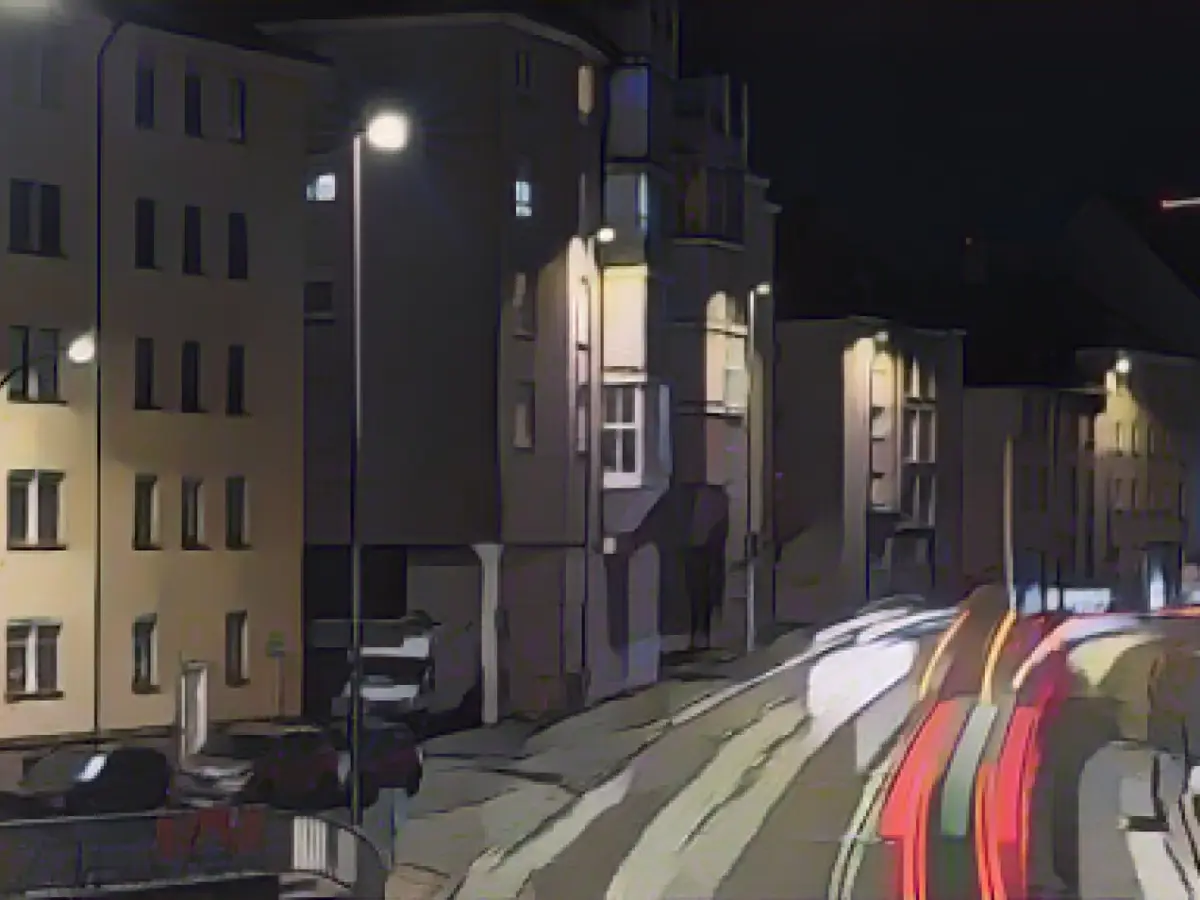Energy - New light in demand: local authorities retool
Increased personnel costs, more money for energy and refugee accommodation: Bavaria's municipalities are groaning under a high expenditure burden. According to a survey conducted by the German Press Agency, some cities are looking to reduce their costs by converting their street lighting to LED lamps (Light Emitting Diodes). For those that converted their street lighting to energy-saving high-pressure sodium lamps just a few years ago, a new modernization would be uneconomical and expensive. But this is not the only reason why work is at different stages.
Between Aschaffenburg and Augsburg, local authorities want to use LEDs in street lights to achieve greater energy efficiency and lower harmful carbon dioxide emissions - and of course save money. In Aschaffenburg, up to 500 outdated lights have been replaced with lights using modern LED technology every year since 2011. This should reduce energy consumption by at least 50 percent, according to the city. The German Energy Agency (Dena) even assumes that converting to LED technology can reduce consumption in local authorities by more than 80 percent in some cases.
Supply bottlenecks due to pandemic and war
Those responsible in Würzburg are also pursuing this goal. There are a total of around 16,400 lights on streets and sidewalks in the city on the Main - almost 10,200 lights have already been running with LED technology for some time. According to Würzburger Versorgungs- und Verkehrs-GmbH, a further 5,500 have been converted to LED this year. Only around 700 special luminaires are to remain as gas and tunnel luminaires.
The state capital of Munich is looking after around 100,000 street lights. 68,000 of these are to be equipped with LEDs in future. "Energy saving and ecological aspects play an important role here", is how the city explains the planned conversion measures. However, the work is being made more difficult by supply bottlenecks at luminaire manufacturers and contractors due to the pandemic and war.
All light points in Nuremberg are to be converted to LEDs in the next five years - 48,000 according to the city. So far, most of them have been sodium vapor lamps, with LED luminaires accounting for only around a quarter.
Not too much artificial light
The switch from street lamps to LEDs has been taking place in many European countries for years. However, this has changed the color spectrum of night-time lighting. The use of LEDs means that even fewer stars are visible in cities, for example, and that the movement of moths and other insects that approach or avoid light sources is further altered.
According to researchers, light pollution, i.e. the trend towards continuous night-time illumination with artificial light, is probably a major cause of global species extinction. Artificial light disrupts the internal clock of many animals, as a visiting scientist from Ludwig Maximilian University in Munich has discovered.
Energy-saving modernization a must
Many local authorities have previously used sodium vapor lamps with orange-yellow light - more than 16 percent of which are used in the 18,500 or so lights in Regensburg, for example. "New installations are now only designed using LED technology," says the city - around 62 percent of the light sources used are now LEDs. At night, the lighting is also dimmed between 9 p.m. and 6 a.m. Traffic lights are also to be converted to energy-saving LED technology.
However, there is also no way around energy-saving modernization: as the EU's Ecodesign Directive, including the ban on light bulbs, also applies to local authorities, street lighting has to be replaced in many places.
In Augsburg, there are around 30,000 light points on public roads, paths and squares. "Most of them are operated with sodium vapor lamps, but also with LED, LCD and halogen lamps," says the Department of Urban Development, Planning and Building. "In some cases, fluorescent tubes are also still in use." Only just under ten percent of the light sources are LEDs. The existing lights are controlled according to demand, thus saving energy and reducing light pollution. "In Augsburg, we already act according to the principle: 'Artificial light - as much as necessary, as little as possible'."
Read also:
- A clan member is punished here
- Traffic lawyer warns: Don't talk to the police!
- Will he be convicted as Jutta's murderer after 37 years?
- He also wanted to kill his cousin
- In Bavaria, municipalities are facing increased financial challenges due to higher personnel costs and energy expenses for refugee accommodations.
- The German Press Agency conducted a survey revealing that some cities are exploring the use of LED lamps for street lighting to decrease energy consumption and costs.
- Converting to LED technology can reportedly reduce energy consumption in local authorities by over 80% according to the German Energy Agency (dena).
- In Aschaffenburg, where 500 traditional street lights have been replaced with LEDs annually since 2011, the city expects a 50% energy reduction.
- The city of Würzburg is also transitioning to LED technology for energy efficiency and lower carbon dioxide emissions, aiming to convert 5,500 lights this year.
- Despite their plans, authorities in Würzburg face challenges due to supply bottlenecks at luminaire manufacturers and contractors caused by the pandemic and war.
- In Augsburg, with around 30,000 public road lighting points, the city is already adhering to the principle of 'artificial light – as much as necessary, as little as possible', as they manage existing lights efficiently and use LED lighting in some areas.
- The state capital of Munich, with its 100,000 street lights, has a goal to replace 68,000 with LED lighting due to energy-saving and ecological factors, but the project is facing challenges due to supply bottlenecks and higher personnel costs.
Source: www.stern.de








